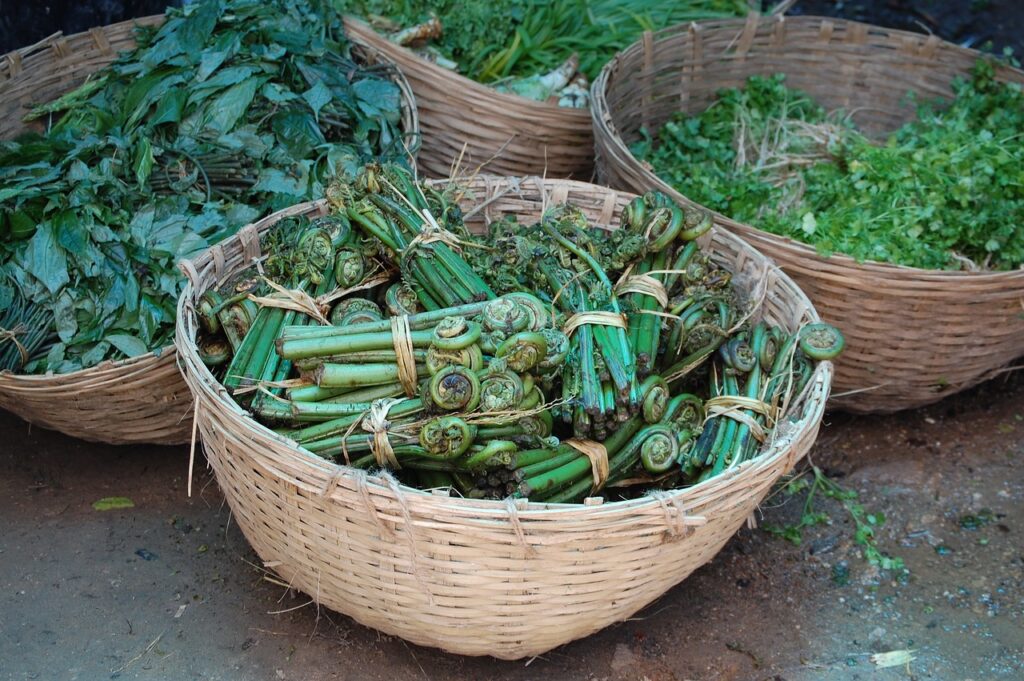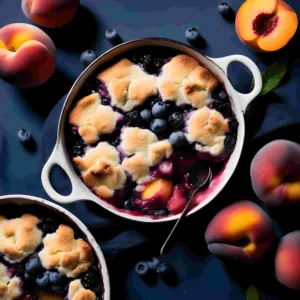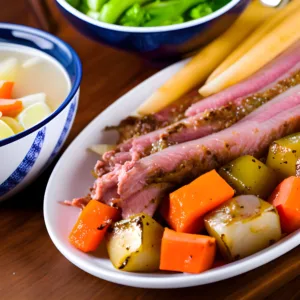This post may contain affiliate links which means I may receive a commission for purchases made through links.
Table of Contents

I. Introduction
How to cook Fiddleheads
Before we jump in how to cook fiddleheads, let us explore what makes fiddleheads unique to the culinary world.
Overview of Fiddleheads and Their Culinary Appeal
Fiddleheads, the young and coiled fronds of certain fern species, have captivated the taste buds of food enthusiasts and chefs alike. With their unique shape and vibrant green color, fiddleheads bring a touch of elegance to any dish. These edible ferns offer a delicate texture and a flavor reminiscent of a combination of asparagus, spinach, and artichokes. As a result, they have become increasingly popular in the culinary world, both for their visual appeal and their delectable taste.
Why Fiddleheads Are Gaining Popularity in the Culinary World
In recent years, fiddleheads have experienced a surge in popularity among food enthusiasts, chefs, and health-conscious individuals. There are several reasons contributing to this culinary trend:
Exquisite Flavor Profile
Fiddleheads possess a unique flavor that is difficult to replicate with other ingredients. Their delicate and slightly nutty taste adds a pleasant dimension to various dishes.
Nutritional Benefits
Fiddleheads are not only delicious but also highly nutritious. They are an excellent source of vitamins A and C, iron, antioxidants, and omega-3 fatty acids. Incorporating fiddleheads into your diet can provide a boost to your overall health and well-being.
Seasonal Delicacy
Fiddleheads have a relatively short harvesting season, typically in the spring. Their limited availability creates an air of exclusivity and excitement around them, making them a coveted ingredient among food enthusiasts.
Culinary Versatility
Fiddleheads can be prepared using a variety of cooking techniques, allowing for versatility in the kitchen. They can be steamed, grilled, stir-fried, deep-fried, or incorporated into various recipes, providing endless opportunities for culinary exploration.
Aesthetic Appeal
Fiddleheads’ visually striking appearance adds an element of sophistication to both simple and elaborate dishes. Their coiled shape and vibrant green hue make them an excellent choice for garnishing and enhancing the overall presentation of a dish. As we delve deeper into the world of fiddleheads, we will explore various techniques for preparing and cooking them, discover mouthwatering recipes that highlight their unique qualities, and learn how to fully appreciate and enjoy these delightful ferns.
Understanding Fiddleheads
What Are Fiddleheads?
Fiddleheads are the young, tightly coiled fronds of certain fern species. These delicate greens emerge in the early spring, before the fern unfurls into its full-grown form. The name “fiddlehead” comes from their resemblance to the curled head of a violin or fiddle. Fiddleheads are typically harvested when they are about 1 to 2 inches in diameter and are still tightly coiled. They can be found in forests, wetlands, and other areas with moist soil.
Types of Fiddleheads Commonly Used in Cooking
While several fern species produce edible fiddleheads, there are a few types that are commonly used in culinary applications. The two most popular types are the Ostrich fern (Matteuccia struthiopteris) and the Bracken fern (Pteridium aquilinum). Ostrich fern fiddleheads are often preferred for their tender texture and mild flavor, while Bracken fern fiddleheads have a slightly more assertive taste.
Nutritional Benefits of Fiddleheads
Fiddleheads are not only a culinary delight but also a nutrient powerhouse. Here are some key nutritional benefits of fiddleheads
Rich in Vitamins and Minerals:
Fiddleheads are an excellent source of vitamins A and C, which are essential for maintaining healthy skin, boosting the immune system, and promoting good vision. They also provide a good amount of iron, which supports healthy blood cells and prevents anemia.
Antioxidant Properties:
Fiddleheads contain various antioxidants, including flavonoids and phenolic compounds. These antioxidants help protect the body against oxidative stress, reducing the risk of chronic diseases such as heart disease and certain types of cancer.
Fiber Content
They are a good source of dietary fiber, which aids digestion, promotes satiety, and supports a healthy gut. Including fiber-rich foods like fiddleheads in your diet can contribute to improved digestive health.
Omega-3 Fatty Acids
Fiddleheads contain a small amount of omega-3 fatty acids, which are beneficial for heart health and brain function. While they are not a primary source of these essential fatty acids, every little bit counts towards a balanced diet. By incorporating fiddleheads into your meals, you not only add a burst of flavor and texture but also boost your nutrient intake. These verdant ferns offer a delicious way to enhance the nutritional value of your dishes and promote overall well-being.
Preparing Fiddleheads
Cleaning and Washing Fiddleheads
Properly cleaning and washing fiddleheads is essential to remove any dirt, debris, or residual husk. Follow these steps to ensure clean fiddleheads:
Trim the Ends
Start by trimming off the tough ends of the fiddleheads, removing about ¼ to ½ inch.
Rinse in Cold Water
Place the trimmed fiddleheads in a colander and rinse them thoroughly under cold running water. Gently rub them with your fingers to remove any dirt or loose husk.
Soak in Water
Fill a large bowl or basin with cold water and immerse the fiddleheads. Allow them to soak for a few minutes to loosen any remaining debris.
Rinse Again
Drain the water and give the fiddleheads a final rinse under cold running water. Check for any remaining husk or dirt and remove them by gently rubbing the fiddleheads with your fingers.
Removing the Papery Brown Husk
Fiddleheads have a thin, papery brown husk that should be removed before cooking. Follow these steps to remove the husk:
Gently Peel the Husk:
Hold the fiddlehead firmly and use your fingers or a small knife to peel away the husk in a downward motion. Be careful not to apply too much pressure to avoid damaging the delicate fern. Continue peeling the husk from each fiddlehead until you have removed the entirety of the papery brown covering.
Blanching Fiddleheads for Optimal Taste and Texture
Blanching fiddleheads involves briefly boiling or steaming them before further cooking. This process helps enhance their flavor, preserve their vibrant green color, and improve their texture. Follow these steps for blanching fiddleheads:
Boiling Method
Bring a large pot of salted water to a boil. Carefully add the prepared fiddleheads and cook them for 2 to 3 minutes. Drain the fiddleheads and immediately transfer them to a bowl of ice water to stop the cooking process.
Steaming Method
Place the prepared fiddleheads in a steamer basket or a heatproof colander. Steam them over boiling water for 3 to 4 minutes until they become tender. Once steamed, transfer the fiddleheads to a bowl of ice water to cool.
Tips for Selecting Fresh and High-Quality Fiddleheads
When choosing fiddleheads for your recipes, keep the following tips in mind:
Look for Vibrant Green Color
Select fiddleheads that have a bright green color, indicating freshness and optimal flavor.
Firm and Tightly Coiled
Opt for fiddleheads that are firm to the touch and tightly coiled. Avoid any that appear wilted or have unfurled fronds.
Fresh Cut Ends
Check the cut ends of the fiddleheads. They should be moist and have a clean cut, indicating they are freshly harvested.
Avoid Discolored or Slimy Fiddleheads:
Discard any fiddleheads that show signs of discoloration, sliminess, or an unpleasant odor.
By following these preparation steps and selecting high-quality fiddleheads, you can ensure that your culinary adventure with these delightful ferns starts off on the right foot. Clean, husk-free, and blanched fiddleheads are ready to take center stage in your delicious recipes.
Cooking Techniques for Fiddleheads
Steamed Fiddleheads: A Light and Healthy Option
This recipe serves 2-4
Steaming fiddleheads is a popular cooking method that preserves their natural flavors and textures while maintaining their nutritional integrity. To steam fiddleheads(1 lbs), you will need fresh fiddleheads, water, and a steamer basket. Simply place the fiddleheads in the steamer basket, add water to the pot, and steam them for about 5-7 minutes until they become tender. Steamed fiddleheads make a delightful side dish or can be incorporated into salads or stir-fries.
Grilled Fiddleheads: Enhancing the Natural Flavors
This recipe serves 2-4
Grilling fiddleheads adds a smoky and charred essence to their taste, elevating their flavor profile to new heights. To grill fiddleheads, you will need fresh fiddleheads(1 lbs.), olive oil(2 tablespoon), salt, and pepper. Toss the fiddleheads with olive oil, salt, and pepper in a bowl. Preheat the grill to medium-high heat and place the fiddleheads directly on the grates. Grill them for about 3-5 minutes, turning occasionally, until they are slightly charred and tender. Grilled fiddleheads make a fantastic accompaniment to grilled meats or can be enjoyed as a standalone appetizer.
Deep-Fried Fiddleheads: A Crispy and Indulgent Treat
This recipe serves 2-4
Deep-frying fiddleheads creates a crispy and irresistible snack that is sure to satisfy your cravings. To deep-fry fiddleheads, you will need fresh fiddleheads(1 lbs.), all-purpose flour(1 cup), egg(2 large), milk(1 cup), salt, and oil for frying. Start by washing and drying the fiddleheads. In a bowl, whisk together flour, salt, and a pinch of your preferred spices.
In a separate bowl, beat an egg with milk. Dip each fiddlehead into the egg mixture, then coat it with the flour mixture. Heat oil in a deep pan or pot and fry the fiddleheads until golden brown and crispy. Drain them on paper towels to remove excess oil. Deep-fried fiddleheads make a delightful appetizer or snack option.
Remember to experiment with different cooking techniques to discover your favorite way of enjoying fiddleheads. Whether you prefer the lightness of steaming, the smokiness of grilling, or the indulgence of deep-frying, each method offers a unique culinary experience that showcases the versatility of fiddleheads.
Stir-Fried Fiddleheads: Quick and Flavorful
This recipe serves 2-4
Stir-frying is a fantastic way to showcase the vibrant color and tender texture of fiddleheads while imparting them with a delightful combination of flavors. To prepare a mouthwatering stir-fried fiddlehead dish, you will need the following ingredients: fiddleheads (1 pound), vegetable oil (2 tablespoons), garlic cloves (2, minced), ginger (1 teaspoon, grated), soy sauce (2 tablespoons), sesame oil (1 teaspoon), and red pepper flakes (optional, for heat). This recipe serves 4.
Start by cleaning the fiddleheads thoroughly. Trim off any brown ends and rinse them under cold water to remove any dirt or debris. Bring a pot of salted water to a boil and blanch the fiddleheads for 2-3 minutes until they are slightly tender. Drain and rinse them under cold water to stop the cooking process. Pat them dry with a kitchen towel.
Heat a large skillet or wok over medium-high heat. Add vegetable oil and swirl it around to coat the pan evenly. Add minced garlic and grated ginger to the hot pan and stir-fry for about 30 seconds until fragrant. Be careful not to burn them. Add the blanched fiddleheads to the pan and stir-fry them for 3-4 minutes, tossing them frequently. The fiddleheads should become slightly crispy while retaining their bright green color.
Drizzle soy sauce and sesame oil over the fiddleheads and continue stir-frying for another minute to coat them evenly. If desired, sprinkle a pinch of red pepper flakes for a hint of heat. Transfer the stir-fried fiddleheads to a serving dish and garnish with additional chopped green onions or sesame seeds, if desired. Serve immediately as a side dish or as a topping for rice or noodles.
Garlic-Infused Fiddleheads: Elevating the Taste Profile
This recipe serves 2-4
Infusing fiddleheads with the aromatic and savory notes of garlic takes their flavor to a whole new level. For a delectable garlic-infused fiddlehead dish, gather the following ingredients: fiddleheads (1 pound), olive oil (2 tablespoons), garlic cloves (3, minced), lemon juice (1 tablespoon), salt (to taste), and black pepper (to taste), fresh lemon juice(1 tablespoon). This recipe serves 2 as a side dish.
Clean and Blanch the Fiddleheads: Clean the fiddleheads by trimming off the brown ends and rinsing them under cold water. Then, blanch the fiddleheads in boiling salted water for 2-3 minutes until they are slightly tender. Drain and rinse them under cold water, and pat them dry. Heat olive oil in a skillet over medium heat. Add minced garlic to the pan and sauté for 1-2 minutes until the garlic becomes fragrant and lightly golden.
Add the blanched fiddleheads to the skillet and toss them with the garlic-infused oil. Sauté for an additional 2-3 minutes, stirring occasionally, until the fiddleheads are heated through and well-coated with the garlic oil. Squeeze fresh lemon juice over the fiddleheads and season with salt and black pepper to taste. Toss them gently to distribute the flavors evenly.
Transfer the garlic-infused fiddleheads to a serving dish. They make a delightful side dish to accompany grilled meats or fish.
Pairing Fiddleheads with Chicken: A Delicious Combination
This recipe serves 2-4
The combination of tender chicken and fiddleheads creates a harmonious blend of flavors and textures that is sure to satisfy your taste buds. For a delightful chicken and fiddlehead dish, you will need the following ingredients: boneless, skinless chicken breasts (2, thinly sliced), fiddleheads (1 pound), olive oil (2 tablespoons), garlic cloves (3, minced), lemon zest (1 teaspoon), lemon juice (2 tablespoons), dried thyme (1 teaspoon), salt (to taste), and black pepper (to taste).
Slice boneless, skinless chicken breasts into thin strips. Season the chicken with dried thyme, salt, and black pepper. Clean and blanch the fiddleheads in boiling salted water for 2-3 minutes until slightly tender. Drain and rinse them under cold water. Set them aside.
Heat olive oil in a skillet over medium-high heat. Add the seasoned chicken strips to the pan and cook for 5-6 minutes. They are cooked through if turned golden brown and verify for safe consumption using meat thermometer for its internal temperature and make sure it has reached 165 F. Remove the chicken from the pan and set it aside.
In the same pan, add minced garlic and cook for 1 minute until fragrant. Add the blanched fiddleheads and sauté for 3-4 minutes until they are heated through and lightly crispy. Return the cooked chicken to the pan with the fiddleheads and stir-fry for another minute to combine the flavors. Sprinkle lemon zest and drizzle lemon juice over the chicken and fiddleheads. Toss them gently to incorporate the citrusy flavors. Transfer the chicken and fiddlehead mixture to a serving platter. This delicious combination pairs well with rice or roasted potatoes.
These cooking techniques and flavor combinations highlight the versatility of fiddleheads and allow you to explore their potential in various dishes. Whether you prefer the quick and flavorful stir-fried option, the elevated taste profile of garlic-infused fiddleheads, or the delightful pairing with chicken, each dish offers a unique and delicious experience. Experiment with these recipes, adjust the flavors to your liking, and savor the culinary delight that fiddleheads bring to your plate.
Serving and Enjoying Fiddleheads
Garnishing Ideas for Cooked Fiddleheads
When it comes to serving cooked fiddleheads, a well-thought-out garnish can elevate the presentation and flavor profile of your dish. Consider the following garnishing ideas to make your fiddlehead creations even more appealing:
Lemon Zest
Sprinkle some freshly grated lemon zest over the fiddleheads to add a touch of brightness and citrusy aroma.
Toasted Almonds
Crushed or sliced toasted almonds provide a delightful crunch and nutty flavor that complements the tender texture of fiddleheads.
Fresh Herbs
chopped herbs like parsley, chives, or dill can add a pop of freshness and vibrant color to the dish.
Parmesan Cheese
Shave some Parmesan cheese over the fiddleheads to impart a salty, umami richness.
Best Ways to Incorporate Fiddleheads into Dishes
Fiddleheads’ versatility allows them to be incorporated into a wide range of dishes. Here are some of the best ways to use fiddleheads in your culinary creations:
Pasta Dishes:
Toss cooked fiddleheads with al dente pasta, olive oil, garlic, and a sprinkle of Parmesan cheese for a simple yet satisfying meal.
Stir-Fries and Sautéed Dishes
Add fiddleheads to stir-fries or sauté them with other vegetables, proteins like chicken or shrimp, and your choice of flavorful sauces for a quick and nutritious meal.
Salads
Incorporate blanched fiddleheads into salads for a refreshing and vibrant twist. Combine them with mixed greens, cherry tomatoes, sliced radishes, and a light vinaigrette for a nutritious salad bursting with flavors.
Quiches and Frittatas
Fold sautéed fiddleheads into quiches or frittatas along with other ingredients like cheese, onions, and herbs. This adds a delightful texture and taste to your baked egg dishes.
Popular Dishes Featuring Fiddleheads
Fiddleheads can be the star ingredient in a variety of dishes. Here are a few popular recipes that make the most of these unique ferns:
Fiddlehead Soup
A velvety soup featuring pureed fiddleheads, vegetable broth, onions, and herbs, finished with a swirl of cream or coconut milk.
Fiddlehead and Chicken Stir-Fry
A vibrant stir-fry combining fiddleheads, sliced chicken, bell peppers, and a savory sauce served over steamed rice or noodles.
Fiddlehead and Mushroom Risotto:
Creamy risotto made with Arborio rice, sautéed fiddleheads, mushrooms, garlic, Parmesan cheese, and a touch of white wine.
Tips and Tricks for Perfect Fiddleheads
Storage Recommendations for Fiddleheads
Proper storage is crucial to maintain the freshness and quality of fiddleheads. Here are some recommendations:
Refrigeration
Fiddleheads are best enjoyed when they are fresh. To extend their shelf life, store them in a perforated plastic bag or a container in the refrigerator. The ideal temperature for storing fiddleheads is between 32°F (0°C) and 38°F (3°C).
Moisture Control
Fiddleheads have a high water content, so it’s important to prevent them from drying out. Place a damp paper towel in the bag or container to maintain the desired level of moisture.
Limited Storage Period
Fiddleheads are at their best when consumed within a few days of harvesting or purchasing. Aim to use them within 2 to 3 days for optimal flavor and texture.
Avoiding Potential Hazards and Ensuring Food Safety
While fiddleheads are delicious, it’s important to take precautions to ensure food safety:
Thorough Cleaning
Fiddleheads often have brown papery husks that need to be removed before cooking. Additionally, they may harbor dirt or small insects. Rinse them thoroughly under cold water and remove any visible debris.
Proper Cooking
Fiddleheads should be cooked before consumption to eliminate any potential foodborne pathogens. Cooking also helps soften the texture and enhances the flavor. Avoid eating raw fiddleheads.
Allergy Precautions
Some individuals may be allergic to ferns or have sensitivities to certain plant compounds. If you have any known allergies or concerns, consult a healthcare professional before consuming fiddleheads.
Overcoming Common Challenges in Preparing Fiddleheads
Preparing fiddleheads can sometimes present challenges, but with a few tips, you can overcome them:
Cleaning Tips
To remove the papery brown husk more easily, soak fiddleheads in cold water for a few minutes before cleaning. Gently rub them to loosen the husk, then rinse thoroughly.
Blanching for Bitterness
Fiddleheads can sometimes have a slightly bitter taste. To reduce bitterness, blanch them in boiling water for 2 to 3 minutes, then transfer to an ice bath to cool.
Proper Cooking Techniques
Experiment with different cooking methods such as steaming, grilling, or stir-frying to find your preferred way of preparing fiddleheads. Adjust cooking times based on their tenderness and your desired texture. By following these storage recommendations, food safety precautions, and preparation tips, you can ensure that your fiddleheads are fresh, safe to eat, and prepared to perfection. Let’s
Congratulations!
You have successfully completed the exploration. Throughout this article, we have explored the incredible versatility and culinary appeal of fiddleheads. From their delicate texture to their distinctive flavor profile, fiddleheads bring a touch of elegance and uniqueness to any dish. Whether they are steamed, grilled, stir-fried, or deep-fried, fiddleheads add a delightful and vibrant element to recipes. Their versatility allows them to be used in various cuisines and culinary styles, making them a valuable ingredient for both home cooks and professional chefs.
Happy Eating!



